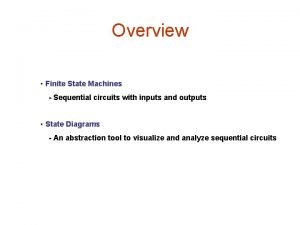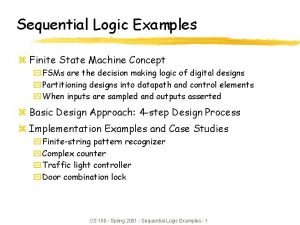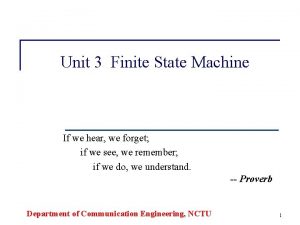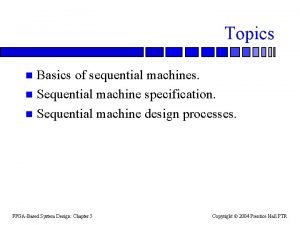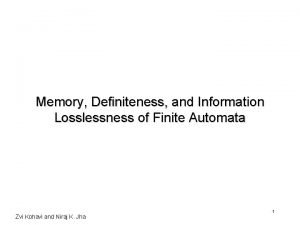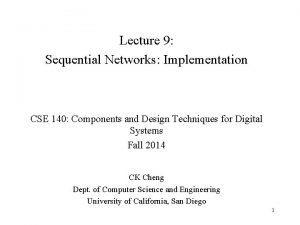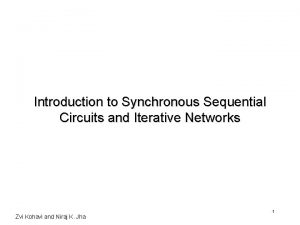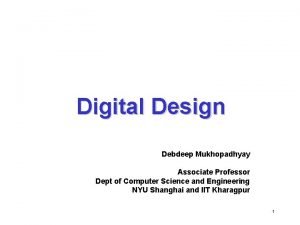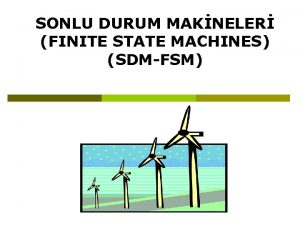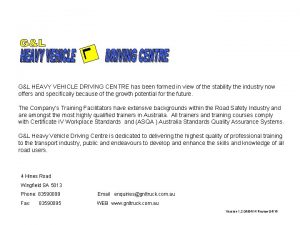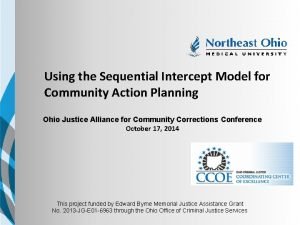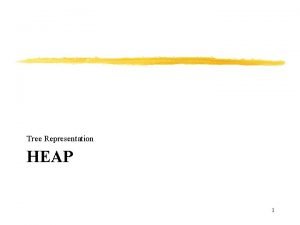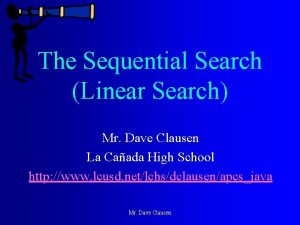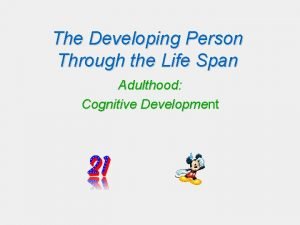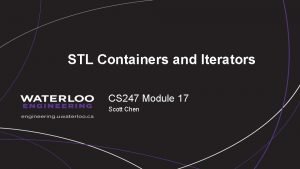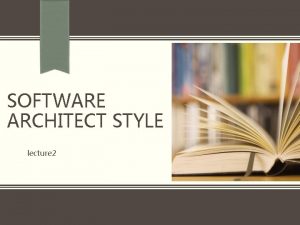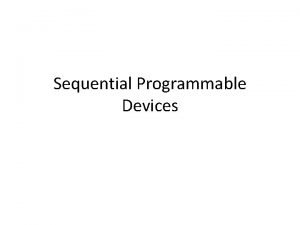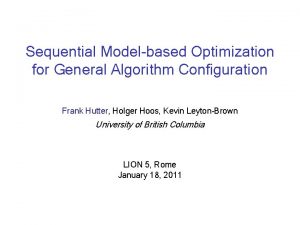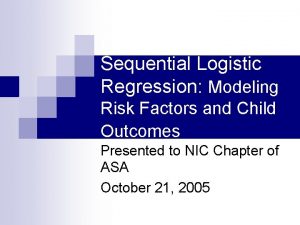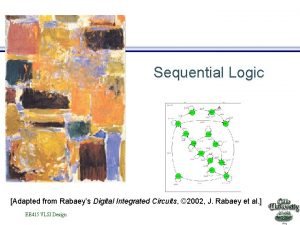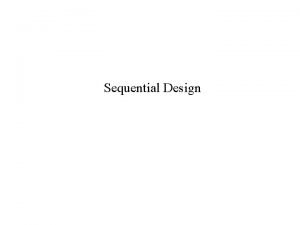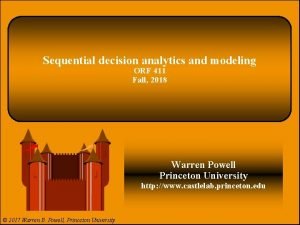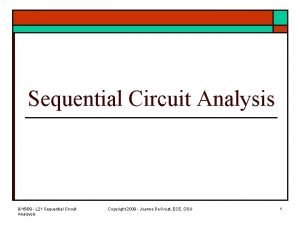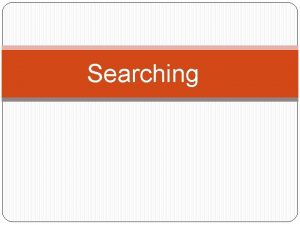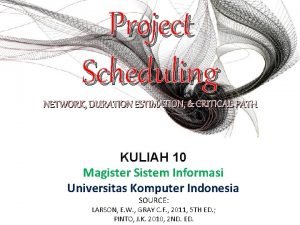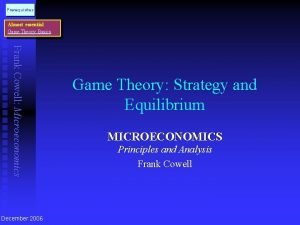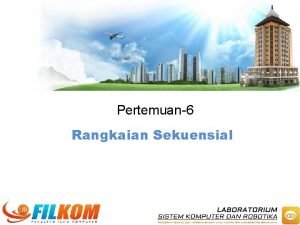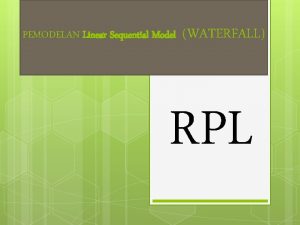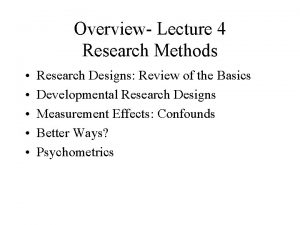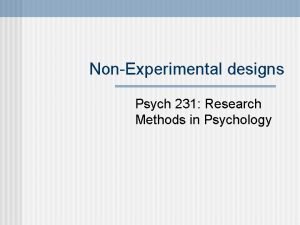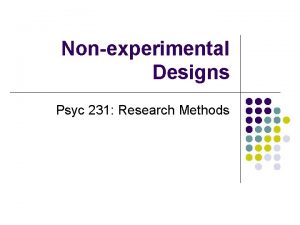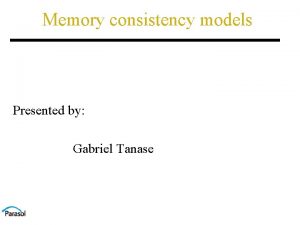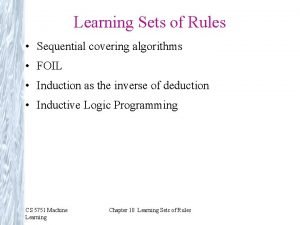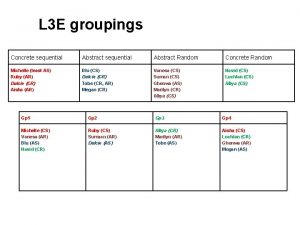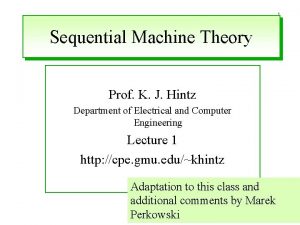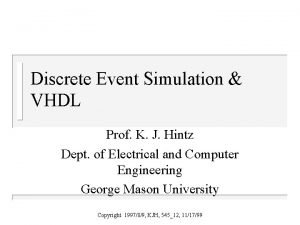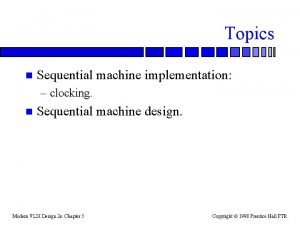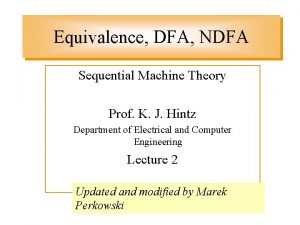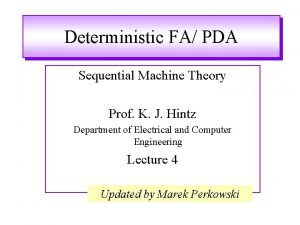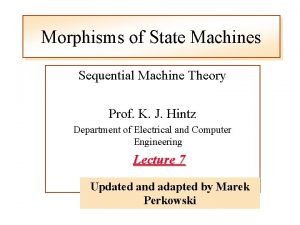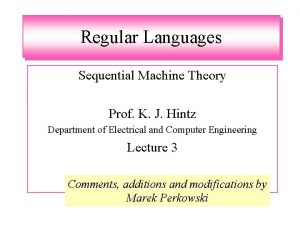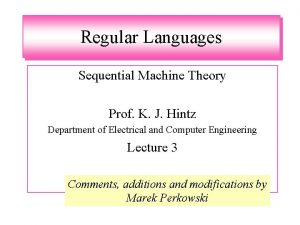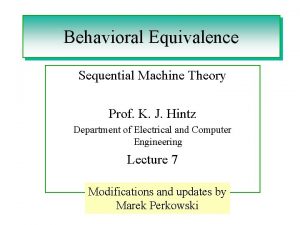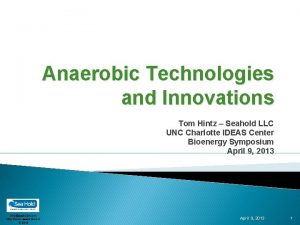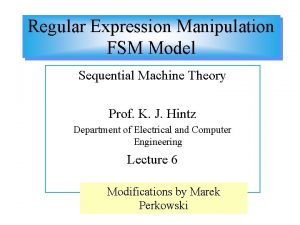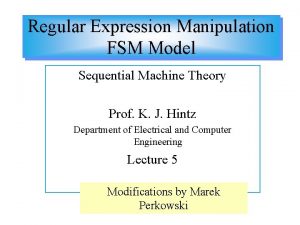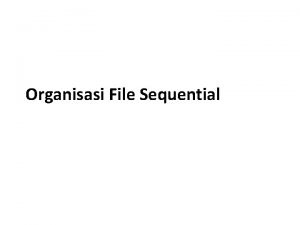1 Sequential Machine Theory Prof K J Hintz












































- Slides: 44

1 Sequential Machine Theory Prof. K. J. Hintz Department of Electrical and Computer Engineering Lecture 1 http: //cpe. gmu. edu/~khintz Adaptation to this class and additional comments by Marek Perkowski

2 Why Sequential Machine Theory (SMT)? • Sequential Machine Theory – SMT • Some Things Cannot be Parallelized • Theory Leads to New Ways of Doing Things, has also practical applications in software and hardware (compiler design, controllers design, etc. ) • Understand Fundamental FSM Limits • Minimize FSM Complexity and Size • Find the “Essence” of a Machine, – what does it mean that there is a machine for certain task?

3 Why Sequential Machine Theory? • Discuss FSM properties that are unencumbered by Implementation Issues: – Software – Hardware – FPGA/ASIC/Memory, etc. • Technology is Changing Rapidly, the core of theory remains forever. • Theory is a Framework within which to Understand Integrate Practical Considerations

4 Hardware/Software • There Is an Equivalence Relation Between Hardware and Software – Anything that can be done in one can be done in the other…perhaps faster/slower – System design now done in hardware description languages (VHDL, Verilog, higher) without regard for realization method • Hardware/software/split decision deferred until later stage in design

5 Hardware/Software • Hardware/Software equivalence extends to formal languages – Different classes of computational machines are related to different classes of formal languages – Finite State Machines (FSM) can be equivalently represented by one class of languages

6 Formal Languages • Unambiguous • Can Be Finite or Infinite – Give some simple examples • Can Be Rule-based or Enumerated • Various Classes With Different Properties

7 Finite State Machines • FSMs are Equivalent to One Class of Languages • Prototypical Sequence Controller – Generator – acceptor – controller • Many Processes Have Temporal Dependencies and Cannot Be Parallelized, – the need some form of state machine. • FSM Costs – Hardware: More States More Hardware – Time: More States, Slower Operation – Technology dependent: how many CPLD chips?

8 Goal of this set of lectures • Develop understanding of Hardware/Software/Language Equivalence • Understand Properties of FSM • Develop Ability to Convert FSM Specification Into Set-theoretic Formulation • Develop Ability to Partition Large Machine Into Greatest Number of Smallest Machines – This reduction is unique

9 Machine/Mathematics Hierarchy • AI Theory Intelligent Machines • Computer Theory Computer Design • Automata Theory Finite State Machine • Boolean Algebra Combinational Logic

10 Combinational Logic • Feedforward • Output Is Only a Function of Input • No Feedback – No memory – No temporal dependency • Two-Valued Function Minimization Techniques – Well-known Minimization Techniques • Multi-valued Function Minimization – Well-known Heuristics

11 Finite State Machine • Feedback • Behavior Depends Both on Present State and Present Input • State Minimization – Well-known – With Guaranteed Minimum • Realization Minimization – Unsolved problem of Digital Design – Technology related, combinational design related

12 Computer Design: Turing Machines • Defined by Turing Computability – Can compute anything that is “computable” – Some things are not computable • Assumed Infinite Memory • State Dependent Behavior • Elements: – – Control Unit is specified and implemented as FSM Tape infinite Head movements • Show example of a very simple Turing machine now: x--> x+1

13 Intelligent Machines • Some machines display an ability to learn – How a machine can learn? • Some problems are possibly not computable – What problems? – Why not computable? – Something must be infinite?

Automata, aka FSM 14 • Concepts of Machines: – Mechanical • Counters, adders – Computer programs – Political • Towns, highways, social groups, parties, etc – Biological • Tissues, cells, genetic, neural, societies – Abstract mathematical • Functions, relations, graphs Yo abl u sho uld con e to cep b u ts i se FS e like n oth M rob er ar otic eas s

15 FSM - Abstract mathematical concept of many types of behavior • Discrete – Continuous system can be discretized to any degree of resolution • Finite State: – finite alphabets for inputs, outputs and states. • Input/Output – Some cause, some result

16 Set Theoretic Formulation of Finite State Machine • S: Finite set of possible states • I: Finite set of possible inputs • O: Finite set of possible outputs • : Rule defining state change • : Rule determining outputs

17 Types of FSMs • Moore FSM – Output is a function of state only • Mealy FSM – Output is a function of both the present state and the present input Discuss timing differences, show examples and diagrams, discuss fast signaling and PLD realization

18 Types of FSMs • Finite State Acceptors, Language Recognizers – Start in a single, specified state – End in particular state(s) • Pushdown Automata – Not an FSM – Assumed infinite stack with access only to topmost element

19 Computer • Turing Machine – Assumed infinite read/write tape – FSM controls read/write/tape motion – Definition of computable function – Universal Turing Machine reads FSM behavior from tape

Review of Set Theory 20 • Element: “a”, a single object with no special property • Set: “A”, a collection of elements, i. e. , – Enumerated Set: – Finite Set:

21 Sets – Infinite set – Set of sets

22 Subsets • All elements of B are elements of A and there may be one or more elements of A that is not an element of B A 7 A 3 A 6 Larry, integers Curly, Moe

23 Proper Subset • All elements of B are elements of A and there is at least one element of A that is not an element of B

24 Set Equality • Set A is equal to set B

25 Sets • Null Set – A set with no elements, • Every set is a subset of itself • Every set contains the null set

26 Operations on Sets • Intersection • Union Logical AND Logical OR

27 Operations on Sets • Set Difference • Cartesian Product, Direct Product

28 Special Sets • Powerset: set of all subsets of A *no braces around the null set since the symbol represents the set

29 Special Sets • Disjoint sets: A and B are disjoint if • Cover: We know set covering problem from 572. It was defined as a matrix problem

30 Properties of Operations on Sets • Commutative, Abelian • Associative • Distributive Left hand distributive

31 Partition of a Set • Properties • pi are called “pi-blocks” or “ -blocks” of PI

32 Relations Between Sets • If A and B are sets, then the relation from A to B, is a subset of the Cartesian product of A and B, i. e. , • R-related:

33 Domain of a Relation Domain of R B R a A b

34 Range of a Relation Range of R R b A a B

35 Inverse Relation, R-1 a A R-1 B b

36 Partial Function, Mapping • A single-valued relation such that R a b b’ a’ A * * can be many to one B

37 Partial Function – Also called the Image of a under R – Only one element of B for each element of A – Single-valued – Can be a many-to-one mapping

38 Function • A partial function with – A b corresponds to each a, but only one b for each a – Possibly many-to-one: multiple a’s could map to the same b

39 Function Example 1 2 3 4 • Unique, one image for each element of A and no more • Defined for each element of A, so a function, not partial • Not one-to-one since 2 elements of A map to v u v w

Surjective (called also Onto) relations 40 • Range of the relation is B – At least one a is related to each b • Does not imply – single-valued – one-to-one A R B Not mapped a 1 2 3 4 s 1 s 2 s 3

41 Injective, or One-to-One relations • “A relation between 2 sets such that pairs can be removed, one member from each set, until both sets have been simultaneously exhausted. ”

43 Bijective • A function which is both Injective and Surjective is Bijective. – Also called “one-to-one” and “onto” • A bijective function has an inverse, R-1, and it is unique

44 Function Examples • Monotonically increasing B if injective • Not one-to-one, but single-valued A B b a a’ A

45 Function Examples • Multivalued, but one-to-one b B There are no two a’s which would have the same b, so it is one-to-one b’ b’’ a A
 Finite state machine sequential circuits
Finite state machine sequential circuits Fsm digital logic
Fsm digital logic Binary state assignment
Binary state assignment Sequential machine
Sequential machine Sequential machine
Sequential machine Mealy machine
Mealy machine Sequential machine
Sequential machine Sequential machine
Sequential machine Sequential state machine
Sequential state machine Finite state machine vending machine example
Finite state machine vending machine example Moore machine
Moore machine Mealy to moore conversion
Mealy to moore conversion Chapter 10 energy work and simple machines answer key
Chapter 10 energy work and simple machines answer key Theory of machine
Theory of machine Sequential intercept model definition
Sequential intercept model definition Linear data structure using sequential organization
Linear data structure using sequential organization Sequential representation of binary tree
Sequential representation of binary tree Sequential search in c
Sequential search in c It is the organized sequence
It is the organized sequence Cross sequential study
Cross sequential study Sequential linear menus
Sequential linear menus Module 1. stl sequential containers
Module 1. stl sequential containers Call and return architecture
Call and return architecture Sequential searching
Sequential searching Combinational logic devices
Combinational logic devices Sequential model-based optimization
Sequential model-based optimization Sequential logistic regression
Sequential logistic regression Non bistable sequential circuits
Non bistable sequential circuits Sequence of writing process
Sequence of writing process Sequential code example
Sequential code example Sequential decision analytics
Sequential decision analytics Sequential circuit analysis
Sequential circuit analysis Sequential search
Sequential search Rangkaian sekuensial adalah
Rangkaian sekuensial adalah What is a nonserual sequential logic in project
What is a nonserual sequential logic in project What is a nonserual sequential logic in project
What is a nonserual sequential logic in project Sequential game examples
Sequential game examples Contoh rangkaian sekuensial
Contoh rangkaian sekuensial Model waterfall
Model waterfall Cohort effects definition
Cohort effects definition Large n design
Large n design Sequential vs longitudinal study
Sequential vs longitudinal study Memory consistency
Memory consistency Sequential covering algorithm
Sequential covering algorithm Concrete sequential
Concrete sequential
